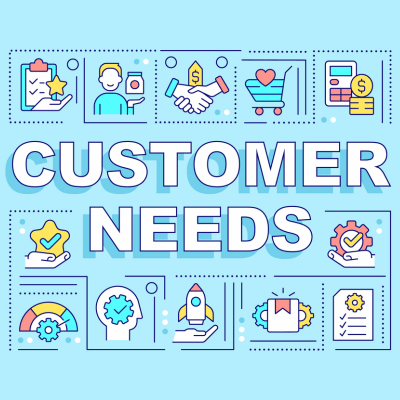Providing constructive feedback can be challenging for both parties. Addressing someone else’s behavior in the workplace might feel uncomfortable. Meanwhile, the receiver may feel insulted if the feedback lacks tact, empathy, and effectiveness.
This could harm the professional relationship and cause hindrances in daily work. This article covers some ways you can avoid this scenario by mastering the art of constructive feedback.
What Is Constructive Feedback In Business
Constructive feedback in business refers to feedback provided in a supportive and helpful manner. This feedback is often about improving performance, processes, or outcomes. It focuses on specific behaviors or actions rather than personal characteristics.
Giving specific feedback should be about helping others without judging them personally. Constructive feedback typically highlights both strengths and areas for improvement.
It offers actionable suggestions and encourages open communication. This feedback contains mutual respect and a growth-oriented mindset within the organization.
What Is The Art Of Giving Constructive Feedback?
The art of giving constructive feedback revolves around three factors: Empathy, dialogue, and positive suggestion. You need to educate the person while addressing any unacceptable behavior.
Some bosses naturally excel at this process. They effortlessly deliver critiques in a manner that feels positive and encouraging. Others may need to practice and learn this skill. If you’re uncomfortable providing actionable advice to team members, you’re not alone, but maintaining a positive tone and avoiding accusatory language is key.
Constructive feedback requires clear communication, empathy, and a focus on specific behaviors rather than personal attributes. The process begins with careful observation and identification of specific areas.
For example, if an employee is late for work every day, you can address this issue promptly, preferably privately, and deliver the message positively or non-judgmentally.
Be specific on how these late marks can affect this employee’s performance and productivity. You can also provide examples of other team members who may suffer during their absence.
Additionally, ensure that you listen actively to the recipient’s perspective. An open dialogue will help you give better constructive feedback. The goal is to inspire and empower individuals to reach their full potential without demeaning them.
What Are The 5 Steps To Giving Constructive Feedback?
Not sure how to start a feedback conversation? You can follow these steps to communicate the issue positively:
- Be Specific
Don’t be vague or play blame games in the workspace. Clearly identify the behavior or performance that needs improvement. You can provide concrete examples to illustrate your points patiently.
- Find The Right Time
Avoid criticizing in the heat of the moment. It’s not helpful to approach someone immediately after they’ve spoken or done something wrong. Instead, offer positive feedback in the moment and find a more suitable time to provide constructive advice.
- Focus On Actions, Not The Person
The individual isn’t lazy; their paper was simply sloppy. They aren’t refraining from doing their jobs; the editing process was just incomplete. You need to focus on the actions rather than the person.
- Use the “Sandwich” Approach
Start with positive feedback to set a supportive tone. Then, address areas for improvement and end with encouragement or positive remarks. This is called a sandwich approach.
- Encourage Dialogue
Create an open and supportive environment where the recipient feels comfortable discussing the feedback and sharing their opinions. Listen carefully and be receptive to their input. It will foster your professional relationship with them.
How Can I Improve My Ability To Provide Constructive Feedback?
Improving your ability to provide constructive feedback involves several key steps:
- Develop Active Listening Skills: Listen closely to what others say without interrupting. This allows you to understand their perspective before you conclude anything.
- Be Specific and Objective: Offer specific feedback for major misconduct. Focus on behaviors or actions rather than making generalizations. If you scrutinize people for small things, it will come out as nagging rather than feedback.
- Offer Solutions and Suggestions: Instead of pointing out problems or calling them wrong, provide constructive suggestions for improvement. Offer actionable advice that the recipient can implement in the future. The suggestions should benefit both the employee and the organization.
- Create a Positive Environment: Foster trust and respect where people feel comfortable receiving feedback. You can praise them for their strengths along with areas for improvement.
- Encourage Two-Way Communication: Invite recipients to share their thoughts and perspectives on the feedback received. Encourage open dialogue and constructive discussions.
- Practice Empathy: Put yourself in the recipient’s shoes and consider how they might perceive the feedback. Emotional intelligence is quite crucial while giving feedback.
- Seek Feedback on Your Feedback: Reflect on your feedback delivery and ask for input from others. Soliciting feedback allows you to identify areas for improvement in your approach.
In Example Of Constructive Feedback
If you’re still navigating the process of providing constructive feedback, these examples could offer some guidance.
Example 1: An individual speaks over others and interrupts in meetings.
“We appreciate your efforts to put forth new ideas during the meetings. However, we feel that each team member should receive an equal opportunity to express their ideas. We can achieve our goal only when we consider everyone’s thoughts.”
“We need to ensure every member feels respected and gets a chance to speak without interruption. Would you be open to ensuring that we give each other space to speak? This way, we can foster a more collaborative and inclusive environment during our meetings”.
Example 2: A team member who doesn’t commit to team projects.
“We’ve noticed some challenges with meeting commitments on our group projects. We should rely on each other to fulfill our responsibilities. Can we support you in meeting your commitments? Or is there a better way to allocate tasks to ensure they are completed on time?”
Example 3: An employee who is always late to the office.
“We’ve observed that our morning meetings are consistently delayed. We understand the personal struggles of each individual, but punctuality is important for team collaboration. Could there be any reason why you’re running late? We could work on it together. Let’s discuss how we can ensure you can attend our morning meetings on time.”
Final Thoughts
Mastering the art of delivering constructive feedback is critical for fostering growth and maintaining positive workplace relationships. Active listening and empathy are key components to providing the best constructive feedback.
Ultimately, any constructive feedback should promote a culture of continuous learning and growth. It must drive better performance and success within the organization.













